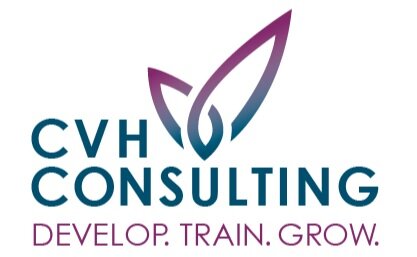Facilitation Pro — Creating a Safe Environment
Creating a safe environment effects the entire learning or facilitation process, from start to finish. When people feel comfortable, they are more likely to share and participate. Participants are more likely to reach goals because you have cultivated a place where they feel welcome and valued.
Consider the Room Set Up
Think back to a training or event you’ve participated in, and consider the space. What worked well? What didn’t? We can learn so much by reflecting on our own experiences. And let’s be honest, the room sets the stage from the second you entered a space. For this reason alone, it is essential to create a warm environment.
A few things to consider:
What is the goal of your gathering? How many people will be in attendance? Will there be group work? Safe space considerations begin long before you arrive.
How are the table and chairs set up? In a circle or rows? Round tables? Square tables? A half circle for discussion? Think this through!
Most importantly, does the set up encourage conversation?
Create a learning environment that will help, not hinder, your goals. Never hesitate to take control of a situation if it’s not what you had planned. I have rearranged conference rooms because they were not conducive to my plans or best for learning or discussion. Getting participants to help you move chairs and tables can be a great way to get to know them, it helps break the ice, and you have the set up you need for the best possible results!
Establish Group “Rules” — But Use Another Name!
No one likes “rules,” especially adult learners! Here are a few ideas for a different name:
Meeting Code
Group Norms
Guidelines
Shared Principles
As you get started, it is important to make sure everyone is on the same page, and that all participants have the same expectations. It’s up to you to let them know when breaks are scheduled, where the bathrooms are and so on, but establishing group norms/codes/guidelines takes it a step farther.
A vital step to this is to have participants establish these commitments as a group. This way they take ownership, feel heard and valued, and participants are more likely to hold each other accountable. Why wouldn’t you want to take pressure off yourself, and make them feel included in the process? It is a win-win! I typically write the norms on a flip chart paper and leave them visible for the entire training.
Norms could include, but are not limited to:
Limit side conversations/one person speaks at a time
Be respectful of each other, time, the agenda…
Silence your phones
Ask questions
Have fun
I promise, your group will have no trouble coming up with their own set of creative norms to follow! People are creative and actually want to be held accountable.
Ask for Expectations
Asking for participant expectations does a few things:
It shows participants you care about what they hope to take from the event. (Buy-in!)
It provides you with more information about your audience, you want to be on the same page.
In closing, it allows you to reflect on how you met the needs of the group.
I typically do this in pairs and have participants use post-it notes. You can incorporate it as an ice-breaker! It is a great way to start a conversation among participants.
Prepare
You’ll hear this time and time again throughout my “Facilitation Pro!” series. Always be prepared! To put others at ease, you have to be comfortable yourself. Practice, have back-up discussion questions, and prepare yourself for challenging situations.
Focus on Yourself (Beforehand)
Have you ever considered what triggers you as a facilitator? For example, do you fear being disrespected? Or maybe your fears are in the content not being well-received? Is it a particular participant behavior that may be difficult to control? We all have at least one trigger. I’ll be honest, I hate being disrespected. What helps me? A deep breath during a break, and a little reminder somewhere on my notes that I wrote down beforehand… “this is not about me.” It is my role to remain calm and lead.
Plan on how you’ll handle situations as they arise. If you think through possible scenarios and how you would react, you’ll be better prepared and know how to address it without much thought. Your role as a facilitator is always to remain calm and positive. Know how to bring yourself back to the participant and goal. Find a quote, a picture, a motto to remind you that it’s not about you. Always assume the best and remember to be empathic toward others.
It is your role (job!?) to maintain the safe environment, preparation is key.
Other quick tips:
Create roles for participants so they feel involved
Acknowledge comments
Be positive and provide constructive feedback
Remind participants that information will remain confidential (if that is the case)
We’d love to hear from you! What are ways you create a safe environment? Do you have an idea for a future post or a real-life experience you’d like me to address? Please comment in the comments below or email me at christie@cvhconsultingllc.com.



